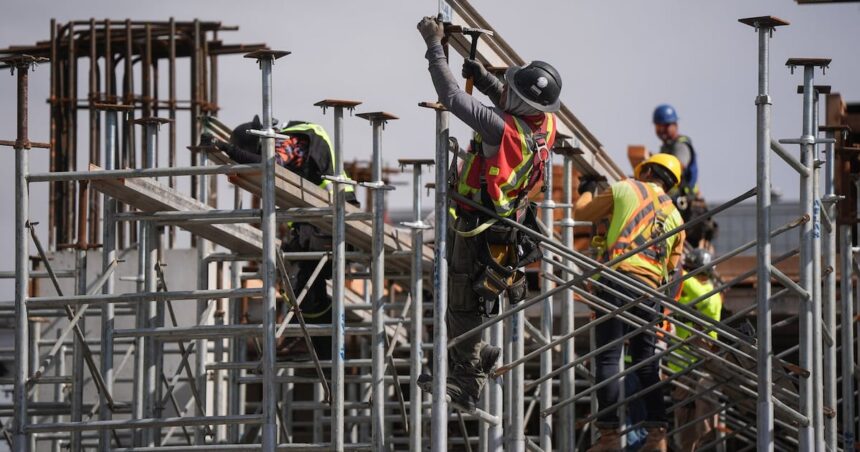The lumber yard on Ottawa’s east end is quieter than usual this April morning. Third-generation builder Marc Lefebvre scans stacks of Douglas fir joists, calculating costs that seem to change weekly. “Five years ago, I could quote a project and stand by that price for months,” he tells me, brushing sawdust from his weathered hands. “Now? Prices can jump 15 percent before the foundation’s even poured.”
Across Canada, homebuilders face unprecedented volatility as U.S. tariffs and retaliatory measures reshape North America’s construction landscape. The announced 25 percent aluminum tariff and 10 percent steel tariff on Canadian imports has sent ripples through supply chains already strained by pandemic disruptions and labor shortages.
The Canadian Construction Association reports material costs have risen 48 percent since 2020, with tariff-impacted materials showing the steepest climbs. For small and medium builders like Lefebvre, these increases aren’t just spreadsheet problems—they’re existential threats.
“We’re caught in a perfect storm,” explains economist Patricia Morgan from the Canada Mortgage and Housing Corporation. “Elevated interest rates already cooled demand, and now builders face input costs that make affordable construction nearly impossible in some markets.” CMHC data shows new housing starts dropped 16 percent in the first quarter compared to last year, with margins compressing dangerously for builders.
In Vancouver, developer Westbank Properties has postponed breaking ground on a 240-unit mid-rise, citing “unsustainable cost projections.” Similar stories echo across Toronto, Montreal, and Calgary, where builders find themselves trapped between rising material costs and buyers’ limited purchasing power.
Beyond the headline materials, tariffs create secondary effects that compound builders’ challenges. Electrical components containing aluminum have seen price increases averaging 18 percent according to Electrical Contractors Association of Canada surveys. HVAC systems, plumbing fixtures, and appliances—many with components crossing borders multiple times during manufacturing—face similar pressures.
“The supply chain is incredibly complex,” notes Samantha Wu, procurement director for Halifax-based Atlantic Developments. “A kitchen faucet might contain metals processed in three different countries before assembly. Tariffs don’t just hit raw materials—they cascade through finished products.”
This cascade effect creates planning nightmares. Builders typically secure financing based on projected costs, but lenders grow hesitant when material prices become unpredictable. The Canadian Home Builders’ Association reports 62 percent of members have had projects delayed or canceled due to financing challenges tied to cost volatility.
Near Windsor, Ontario, contractor James Walton walks me through a half-finished subdivision where work has slowed dramatically. “We’re stretching crews thin, trying to finish what we’ve started before taking on new work,” he explains. Behind him, a partially framed house sits exposed to the elements, tarps flapping in the spring wind. “That house was sold last fall. The buyers are living with relatives, waiting. But I can’t guarantee when we’ll finish or what the final adjustments might be.”
The impacts extend beyond builders to municipalities dependent on development fees and property taxes from new construction. The Federation of Canadian Municipalities estimates that major cities could see revenue shortfalls of $80-120 million this year if construction continues to slow. This threatens infrastructure projects already struggling with their own material cost increases.
Some builders have found creative adaptations. In Quebec, Constructions Boreale has invested in alternative materials less impacted by tariffs. “We’re using more engineered wood products and exploring mass timber construction,” says founder Jean-Marc Tremblay. “It costs more upfront but gives us price stability.” His company has also begun stockpiling certain materials when prices temporarily dip, transforming storage facilities into de facto commodity trading operations.
Indigenous-owned Northern Eagle Construction in Manitoba has shifted toward more labor-intensive, material-efficient designs. “We’re returning to some traditional building techniques that use less steel,” explains project manager Darlene Cardinal. “It creates more jobs in our communities while reducing exposure to tariff-impacted materials.”
Not all adaptations are forward-thinking. Industry observers worry about compromises in building quality. “We’re seeing concerning substitutions,” says building inspector Mohammed Al-Shami. “Thinner gauge metal, fewer fasteners, structural components spaced at maximum allowable distances. It all meets code, barely, but reduces long-term resilience.”
For homebuyers, the consequences arrive as higher prices or delayed possessions. The average new single-family home price has increased 8.2 percent year-over-year according to Canadian Real Estate Association data, with nearly half that increase attributed to material costs rather than land values or labor.
“We signed a contract last summer thinking we’d move in by May,” says Toronto homebuyer Priya Sharma. “Now they’re telling us September, maybe October, and there might be an additional materials surcharge. We’ve already sold our condo. Where are we supposed to go?”
Government responses have been limited. While provinces like British Columbia have implemented measures to streamline permitting and reduce regulatory costs, federal action on tariff impacts remains focused on diplomatic efforts rather than domestic mitigation. The Canada-United States-Mexico Agreement provides some trade protection, but targeted tariffs operate outside this framework.
“The reality is that housing affordability was already a national crisis,” says housing advocate David Chen. “These tariffs pour gasoline on that fire, especially for first-time buyers and vulnerable populations who can least afford delays or price increases.”
Back at the Ottawa lumber yard, Marc Lefebvre loads his truck with materials that cost nearly 40 percent more than they did two years ago. “We’ll weather this,” he says with determined resignation. “My grandfather built through the Depression, my father through the interest rate spikes of the eighties. But someone needs to understand—when you mess with the building materials market, you’re not just affecting contractors. You’re deciding who gets to have a home and who doesn’t.”
As summer construction season approaches, that decision hangs over communities across Canada, where tariffs intended as economic leverage between nations translate into very personal consequences for those simply seeking to build—or own—a place to live.






